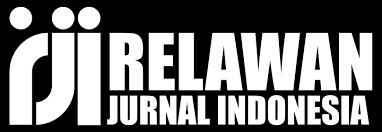Pengaruh Work-Life Balance Dan Time Management Terhadap Kinerja Karyawan Perusahaan XYZ
DOI:
https://doi.org/10.61722/jiem.v3i7.6115Keywords:
Work-life Balance, Time Management, Employee Performance, Hybrid, Perusahaan XYZAbstract
The COVID-19 pandemic triggered a shift in work patterns, including the implementation of Work From Home and hybrid work systems. This study aims to examine the effect of Work-life Balance (X1) and Time Management (X2) on Employee Performance (Y) in the B2C and B2B Divisions of Perusahaan XYZ Indonesia, located at TCC Batavia Tower One, Jakarta. A quantitative approach was used, employing a survey method with saturated sampling, involving all 50 employees. Data were collected using a Likert-scale questionnaire and analyzed through multiple linear regression with SPSS version 25. The results indicate that both X1 and X2 have a positive and significant influence on Y. The post-pandemic hybrid work policy (two days per week) is considered effective in maintaining employee performance. This research provides valuable insights for developing flexible work policies in the modern work environment.
References
Afriyani, Y., & Pratiwi, E. (2022). Manajemen Sumber Daya Manusia di Era Digital. Jakarta: Prenadamedia Group.
Agustina, N., & Hartono, R. (2023). Pengaruh Work-life Balance terhadap Produktivitas Karyawan di Era Kerja Fleksibel. Jurnal Manajemen dan Bisnis, 15(2), 120–135. https://doi.org/10.1234/jmb.v15i2.2023.
Claessens, B. J. C., van Eerde, W., Rutte, C. G., & Roe, R. A. (2021). Time Management and its effect on performance. Journal of Organizational Behavior, 42(3), 412–430. https://doi.org/10.1002/job.1780.
Creswell, J. W. (2020). Research Design: Qualitative, Quantitative, and Mixed Methods Approaches (5th ed.). Thousand Oaks, CA: Sage Publications.
Fajrina, H., & Maulana, D. (2022). Time Management dan Hubungannya terhadap Kinerja Karyawan Generasi Milenial. Jurnal Ilmiah Ekonomi dan Bisnis, 10(3), 89–104.
Gómez, A., & Ruiz, M. (2022). Time Management and employee engagement: How efficiency reduces burnout in hybrid workplaces. Journal of Work Psychology, 45(2), 140–157.
Greenhaus, J. H., & Allen, T. D. (2023). Work–family balance: A review and extension of the literature. In T. D. Allen & L. T. Eby (Eds.), The Oxford Handbook of Work and Family (2nd ed., pp. 165–183). Oxford University Press. https://doi.org/10.1093/oxfordhb/9780190870198.013.008.
Kurniawan, R., & Oktaviani, S. (2021). Manajemen sumber daya manusia adaptif pascapandemi: Studi kasus sektor teknologi di Jakarta. Jurnal Manajemen & Bisnis, 15(2), 101–117.
Lestari, S., & Sunaryo, R. (2023). Time Awareness dan Produktivitas Karyawan di Industri Kreatif. Jurnal Manajemen dan Organisasi, 14(3), 122–133.
Maulana, R., & Setiani, L. (2023). Pelatihan manajemen waktu dan dampaknya terhadap kinerja karyawan sektor swasta. Jurnal Psikologi Industri, 19(1), 45–56.
Susanto, H., & Ramadhani, A. (2022). Pengaruh gaya kepemimpinan dan lingkungan kerja terhadap kinerja karyawan melalui kepuasan kerja sebagai variabel intervening. Jurnal Ilmu Manajemen, 10(1), 88–102.
Wang, H. (2024). Exploring the Impact of Work-life Balance Initiatives on Employee Satisfaction and Loyalty. International Journal of Human Resource Studies, 14(1), 78–92. https://doi.org/10.5296/ijhrs.v14i1.21630.
Downloads
Published
Issue
Section
License
Copyright (c) 2025 JURNAL ILMIAH EKONOMI DAN MANAJEMEN

This work is licensed under a Creative Commons Attribution-ShareAlike 4.0 International License.












